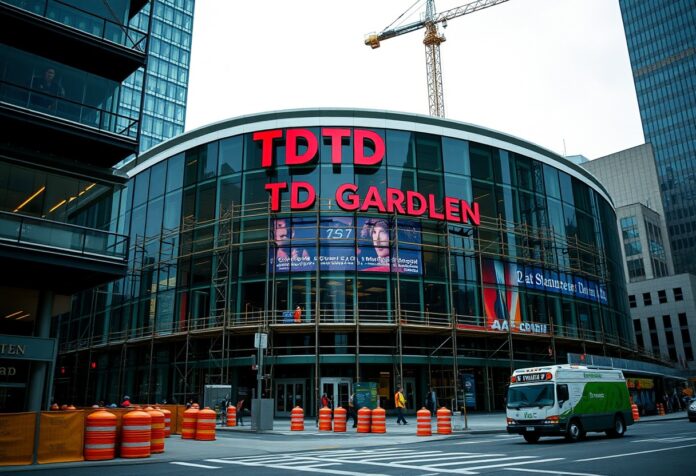Construction of TD Garden transformed Boston’s sports and entertainment landscape, offering a modern venue that pays homage to the city’s rich history. You will explore the innovative design choices, architectural significance, and the challenges faced during its construction. Delving into TD Garden’s creation, you’ll discover how this iconic arena has become a vital part of Boston’s community and urban development.
Key Takeaways:
- Architectural Vision: Designed by Ellerbe Becket, TD Garden reflects Boston’s history while embracing modern architectural trends through its materials and design elements.
- Urban Integration: The arena’s location above North Station highlights accessibility, promoting public transport and reducing traffic congestion for attendees.
- Technological Innovations: Incorporation of advanced technologies, such as retractable seating and enhanced broadcasting capabilities, sets TD Garden apart as a modern event space.
- Sustainability Features: The design includes natural lighting and energy-efficient systems to promote sustainability, even in the early 1990s context.
- Community Impact: TD Garden has significantly contributed to Boston’s economy and urban revitalization, serving as a cultural hub that fosters local businesses and community events.
Historical Context
As you explore TD Garden, it’s important to understand its historical roots. The original Boston Garden, an iconic venue that opened in 1928, served as a central hub for sports and entertainment in the city. Over its lengthy tenure, it hosted countless memorable events, but by the late 20th century, the building began to show its age, leading to discussions about the need for a modern replacement that could meet evolving standards and audience expectations.
From Boston Garden to TD Garden
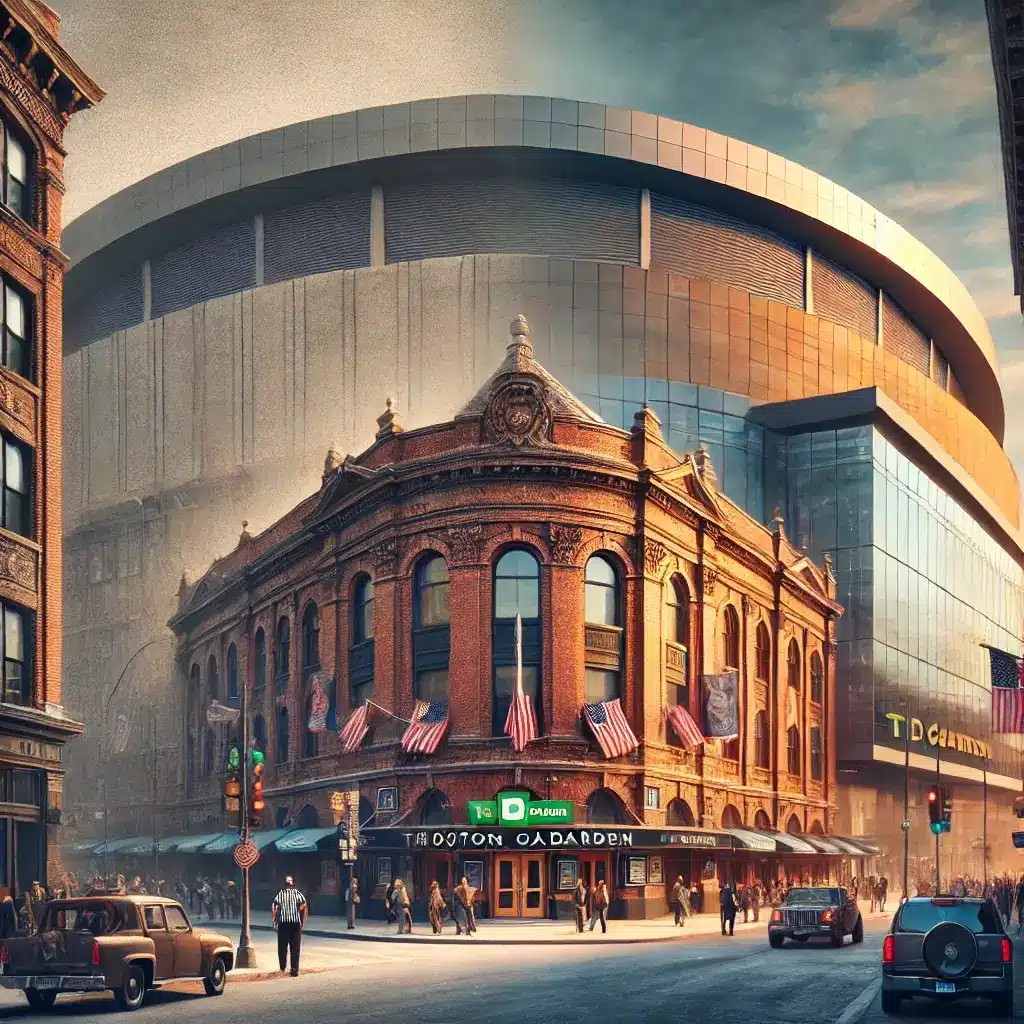
At the heart of Boston’s sports culture, the transition from the original Boston Garden to TD Garden marked a significant shift. The old venue, which operated for 66 years, had become inadequate to meet the demands of contemporary sports and entertainment, prompting the need for a state-of-the-art facility.
The Need for a Modern Arena
After countless events and decades of operation, the original Boston Garden revealed its limitations. As sports teams grew in popularity and the expectations of fans transformed, the old arena lacked crucial amenities, such as luxury suites and modern accessibility features, which are now standard in contemporary venues.
Further analysis revealed that to truly cater to your needs as a fan, an upgraded facility was crucial. The lack of adequate seating capacity and modern conveniences in the old Boston Garden called for a new arena that could accommodate larger crowds while providing amenities that enhanced the overall experience. By the 1980s, discussions became focused on creating a venue that not only fulfilled the current standards but also anticipated future developments in both sports and entertainment, all while fostering a more connected urban environment.
Architectural Vision
Clearly, the architectural vision for TD Garden was centered around creating a space that embodied both functionality and a strong connection to Boston’s rich heritage. The design, led by the firm Ellerbe Becket, sought to produce an arena that not only met the modern needs of sports and events but also reflected the aspirations and historical context of the city you cherish. By embracing a careful balance of modernism and tradition, the architects endeavored to make TD Garden a symbol of Boston’s evolution and a testament to innovative sports architecture.
Design and Planning
Between the diverse requirements of sports teams, concert promoters, and event organizers, the design and planning phase was pivotal in establishing TD Garden’s unique identity. The architects prioritized a flexible floor plan that could adapt to various events, ensuring your experience as an attendee would be top-notch regardless of the performance type. Attention to seating capacity, sightlines, and amenities resulted in an arena capable of hosting approximately 19,600 fans for basketball and 17,500 for hockey, enhancing your overall entertainment experience.
Site Selection and Urban Integration
Between the decision for a suitable location and the need for urban connectivity, the chosen site for TD Garden proved beneficial for both fans and the city. The arena’s placement above Boston’s North Station, a significant transportation hub, was designed to facilitate easy access for visitors arriving by train or subway. This integration not only reduced traffic congestion but also encouraged public transportation use, making your journey to the arena more convenient.
Another key aspect of site selection and urban integration involved considering the impact of TD Garden on the surrounding area. By situating the arena in a vibrant urban landscape, the project aimed to revitalize the North Station area. This decision led to further investments, including residential developments and mixed-use spaces like The Hub on Causeway, enhancing your experience of the neighborhood with an array of dining, retail, and entertainment options right at your fingertips.
Design Features
Many elements contribute to TD Garden’s reputation as a modern sports and entertainment arena. The architectural design incorporates features that enhance both function and aesthetic appeal. Its strategic location above Boston’s North Station emphasizes accessibility, while the blend of glass, steel, and brick connects the arena with Boston’s historical architecture. This fusion of contemporary and traditional styles enriches your urban experience, whether you’re attending a game or a concert.
Functional Versatility
Any event you attend at TD Garden showcases its flexible design. The arena was built to host not only NHL and NBA games but also concerts, family shows, and conventions. You’ll appreciate the adaptable seating configurations that allow for various layouts, ensuring that every event meets the specific needs of the audience and performers alike.
Aesthetic and Technological Considerations
Any visit to TD Garden highlights the importance of aesthetic appeal and modern technology. The exterior design, which combines traditional masonry with sleek glass elements, stands out in the Boston skyline. Inside, innovative technologies, including advanced broadcasting facilities and high-quality acoustics, enhance your overall experience, making each event memorable.
Functional elements such as natural lighting and efficient HVAC systems work seamlessly with the striking design to create a welcoming atmosphere. The arena’s glass facade invites sunlight, reducing reliance on artificial lighting while also offering breathtaking views of the city. These technological advancements play a key role in elevating your experience, ensuring that whether you’re cheering on the Bruins or enjoying a concert, TD Garden remains a premier destination for entertainment in Boston.
Architectural Significance
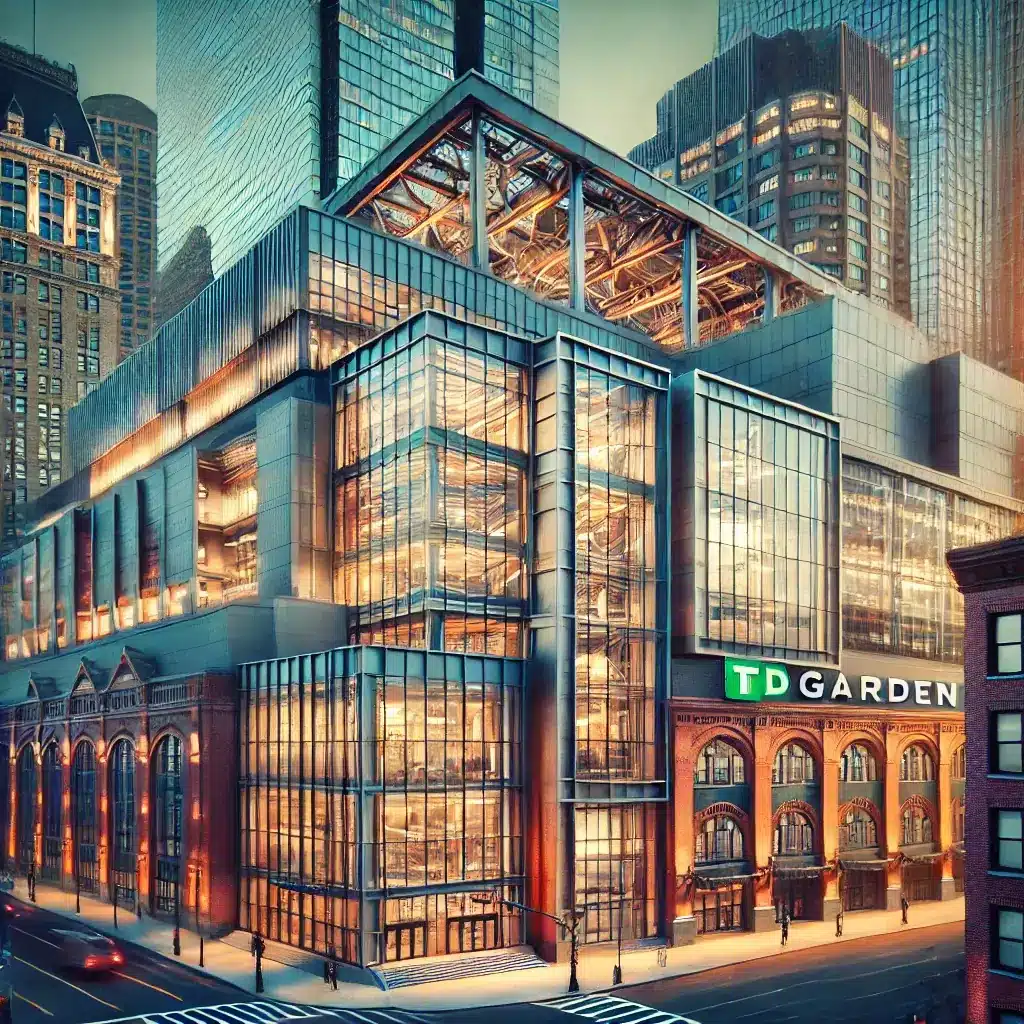
Despite its modern appeal, TD Garden embodies a thoughtful design philosophy that fuses functionality with an appreciation for Boston’s rich history. The venue serves not only as a sports and entertainment hub but as a visual extension of the city’s unique architectural narrative, showcasing how contemporary architecture can harmonize with traditional urban aesthetics.
Blending Tradition with Modernity
Below the striking exterior of TD Garden lies a design that pays homage to Boston’s architectural heritage while embracing modern innovations. The façade artfully combines traditional brickwork with contemporary glass and steel elements, symbolizing the city’s commitment to honoring its past while looking forward to the future.
Sustainability Features
Architectural choices made during TD Garden’s construction helped promote energy efficiency and sustainability. The incorporation of natural lighting through extensive glass elements minimizes reliance on artificial lighting, while modern heating, ventilation, and air conditioning (HVAC) systems enhance overall energy performance.
With these features, TD Garden stands out as an early example of environmentally conscious design in large-scale entertainment venues. You will appreciate the thoughtfulness behind elements like natural light penetration, which not only reduces energy costs but also enhances the visitor experience. Efficient systems throughout the facility contribute to a noticeably lower environmental impact, aligning with your values regarding sustainability and responsible architecture.
Challenges in Construction
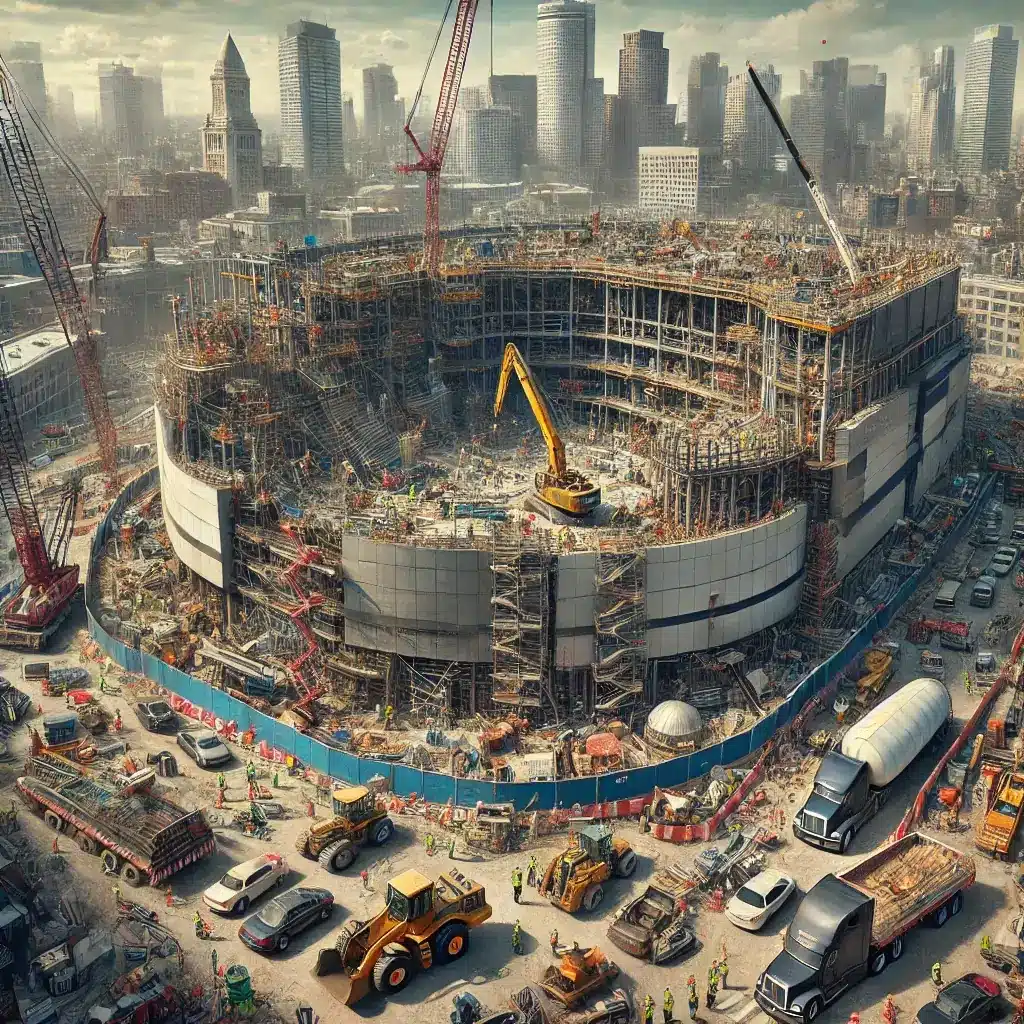
Not every aspect of constructing TD Garden went smoothly. The project faced various obstacles that required innovative solutions, from dealing with urban congestion to managing complex engineering demands. Coordinating with numerous stakeholders, including city officials and transportation authorities, was crucial to meet the aggressive timeline for opening the arena in time for the sports seasons.
Urban Constraints
With its location above North Station, building TD Garden posed significant urban challenges. The dense Boston landscape meant construction teams had to navigate logistical hurdles while minimizing disturbances to daily commuters and local businesses. This urban setting required meticulous planning to ensure the project maintained efficient progress without impacting the bustling transportation hub below.
Budget and Timeliness
Urban planning complexities often put pressure on the project’s budget and timeline. At TD Garden, staying within budget and adhering to scheduled milestones was crucial for ensuring financial viability and operational success. Any delays could disrupt the anticipated opening, impacting not just the venue but also the schedules and revenues of the Boston Bruins and Boston Celtics.
At the outset, the budget for TD Garden necessitated strict oversight to prevent overruns. With a projected timeline set for completion in 1995, you can appreciate the urgency faced by the construction teams. In a competitive environment, where the arena’s operational viability depended on meeting deadlines, careful management of resources helped navigate challenges while keeping the project aligned with financial goals. Balancing efficiency and quality was paramount to successfully delivering a facility that met both community expectations and the owners’ standards.
Impact on the Community
After its opening, TD Garden became an integral part of Boston’s community fabric, not only serving as a venue for sports and entertainment but also enhancing urban vibrancy. It has facilitated greater connectivity within the city, allowing you to easily engage with local events and cultural activities. The arena fosters a sense of pride and belonging among residents, making it more than just a destination for games and concerts.
Economic Catalyst
By creating thousands of jobs during its construction and ongoing operations, TD Garden has significantly boosted Boston’s economy. The influx of visitors for events translates to increased revenue for local businesses like restaurants, hotels, and retailers, ultimately enhancing the economic landscape of the North Station area.
Cultural Significance
At TD Garden, you will find more than just sports; you will experience a hub for community events, concerts, and cultural gatherings that enrich the local scene. It stands as a symbol of Boston’s identity, fostering connections among residents and visitors alike.
For instance, TD Garden regularly hosts community events, charity fundraisers, and graduation ceremonies, making it a pivotal venue for Bostonians to celebrate significant milestones together. It’s not just a place to watch your favorite teams but also to engage with your community. Additionally, the arena has been the backdrop for numerous historic moments in sports and entertainment, enhancing its status as an iconic landmark in the city. This collective experience strengthens your connection to the arena, highlighting its importance as a cultural touchstone for generations to come.
Conclusion
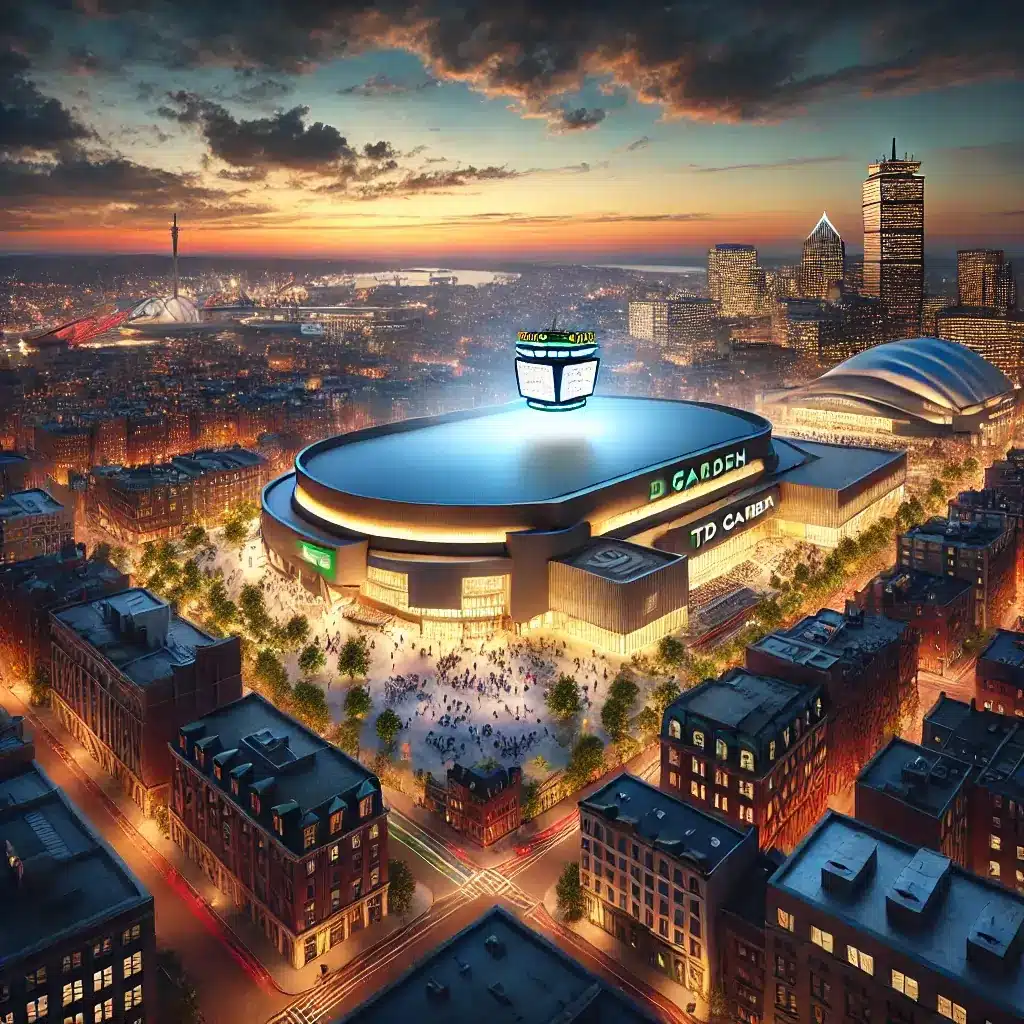
Hence, understanding the design and construction of TD Garden offers you insight into how innovative architectural practices can enhance urban environments. As you explore this iconic venue, you can appreciate how it reflects Boston’s rich history while providing a modern space for sports and entertainment. This arena not only enriches your community experience but also serves as a model for future developments that prioritize functionality, accessibility, and cultural significance.
FAQ
Q: What prompted the construction of TD Garden?
A: The original Boston Garden, which opened in 1928, became outdated by the late 20th century due to its lack of modern amenities such as luxury suites, adequate seating, and accessibility features. The growing demands of sports teams, performers, and audiences led to discussions about building a new arena that could provide state-of-the-art experiences.
Q: Who were the architects behind TD Garden?
A: The architectural firm Ellerbe Becket, which is now part of AECOM, was commissioned to design TD Garden. They are renowned for their expertise in sports architecture and aimed to create a venue that was functional, accessible, and reflective of Boston’s unique history and future.
Q: How does TD Garden integrate with the surrounding urban environment?
A: TD Garden was strategically built above Boston’s North Station, a major transportation hub. This location allows easy access for fans traveling by train or subway, promoting the use of public transportation and reducing traffic congestion in the area.
Q: What are some of the key design features of TD Garden?
A: Key design features of TD Garden include its functional versatility to host various events, seating capacity of approximately 19,600 for basketball and 17,500 for hockey with optimized sightlines, and an aesthetically appealing façade that combines traditional brickwork with modern glass and metal elements.
Q: What steps were taken to ensure accessibility at TD Garden?
A: Accessibility was a top priority in the design of TD Garden. The venue includes ample accessible seating options for guests with disabilities, as well as multiple elevators and ramps to facilitate ease of movement between different levels of the arena.
Q: How did the construction of TD Garden impact the local economy?
A: The construction and ongoing operation of TD Garden have significantly boosted Boston’s economy by creating jobs and benefiting nearby businesses, such as restaurants, hotels, and retail stores. The increased foot traffic around the area has spurred economic growth and revitalized the surrounding neighborhoods.
Q: What cultural significance does TD Garden hold for the Boston community?
A: TD Garden serves as more than just a sports arena; it has become an iconic venue in Boston, hosting community events, charity functions, and graduations. It is also the site of numerous historic sports moments and renowned performances, making it a cherished landmark in the hearts of Bostonians.

